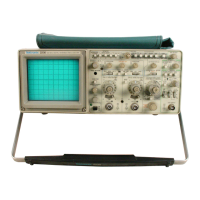Characteristics
Environmental Requirements
Temperature
Operating
Nonoperating
Altitude
Operating
Nonoperating
Humidity
Operating and Nonoperating
-
~
EMI (electromagnetic interference)
Vibration
Operating
Shock
Operating and Nonoperating
General
lnformation-2230
Operators
Table 1-2
Environmental Characteristics
Performance Requirements
Instrument meets the requirements of Tektronix
2853-00, Class
5,
except EMI.
Standard 062-
The instrument meets the following MIL-T-28800C requirements
for Type
111,
Class 5 equipment, except where noted otherwise.
0°C
to
+50°C
(
+32°
F
to
+ 122°
F).
-55°C
to
+
75°C
(-67°F
to
+ 167°F).
Tested
to
MIL-T-28800C, para 4.5.5.1.3 and 4.5.5.1.4, except that
in
para 4.5.5.1.3 steps 4 and 5 are performed before step 2
(-55°C
nonoperating test). Equipment shall remain off upon
return
to
room ambient temperature during step
6.
Excessive con-
densation shall be removed before operating during step 7.
To 4,500 meters (15,000 feet). Maximum operating temperature
decreases 1 °C per 1,000 feet above 5,000 feet.
To 15,000 meters (50,000 feet).
5 cycles (120 hours) referenced
to
MIL-T-28800C para 4.5.5.1.2.2
for Type
111,
Class 5 instruments. Operating and nonoperating at
95%,
-5%
to
+0%,
relative humidity. Operating,
+30°C
to
+50°C;
nonoperating,
+30°C
to
+60°C.
Meets radiated and conducted emission requirements per VOE
0871, Class
B.
To meet EMI regulations and specifications, use the specified
shielded cable and metal connector housing with the housing
grounded
to
the cable shield on the AUXILIARY CONNECTOR.
15 minutes along each
of
three major axes at a total displacement
of
0.015 inch p-p (2.4 g at 55 Hz) with frequency varied from
10 Hz
to
55 Hz
to
10 Hz
in
one-minute sweeps. Hold for 10
minutes at 55 Hz
in
each
of
the three major axes. All major reso-
nances are above 55 Hz.
30 g, half-sine,
11
ms duration, three shocks per axis each direc-
tion, for a total of 18 shocks.
1-13

